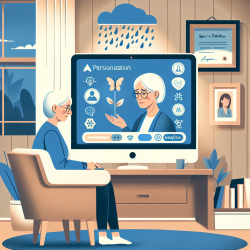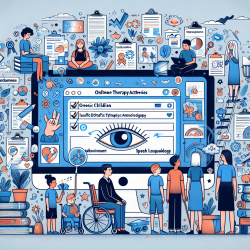As we navigate through the evolving landscape of education, the integration of technology in our approaches to support student success has become increasingly significant. In the realm of special education, particularly in providing speech therapy services, the advent of virtual therapy has marked a pivotal shift. As a Special Education Director, my goal is to ensure that every student receives the personalized support they need to thrive, and virtual therapy has emerged as a powerful tool in achieving this objective.
The transition to virtual therapy services has not only addressed critical speech therapy staffing shortages but has also introduced a new dimension of flexibility and accessibility in meeting Individual Education Plans (IEP) goals. This evolution presents an opportunity for us to reimagine how therapy services can be delivered in a manner that is both effective and adaptable to the diverse needs of our students.
Virtual therapy, or teletherapy, involves providing therapeutic services through a secure online platform, allowing speech therapists to interact with students in real-time, irrespective of their physical location. This model has several benefits:
- Increased Accessibility: Students in remote or underserved areas can now receive high-quality speech therapy services without the logistical barriers that traditionally hindered access.
- Flexibility: The ability to schedule sessions that accommodate the varied schedules of students, families, and therapists enhances participation and engagement.
- Resource Optimization: By leveraging virtual therapy, schools can more effectively manage speech therapy staffing, ensuring that qualified therapists are available to meet student needs without the constraints of geographic boundaries.
- Enhanced Collaboration: Virtual platforms facilitate seamless communication between therapists, educators, and parents, fostering a collaborative approach to supporting students' IEP goals.
As we embrace virtual therapy within our schools, it is crucial to ensure that the technology used is compliant with privacy and security regulations, safeguarding the confidentiality of student information. Additionally, providing training and support for therapists, educators, and families is essential to maximize the benefits of virtual therapy services.
The journey towards integrating virtual therapy into our educational systems is ongoing, and as leaders in special education, we must remain committed to exploring innovative solutions that enhance the support we provide to our students. By doing so, we not only address the immediate challenges of speech therapy staffing shortages but also pave the way for a more inclusive and accessible future for all students.
In conclusion, the rise of virtual therapy in school settings signifies a promising advancement in special education. It offers a pragmatic solution to staffing challenges, while also expanding the horizons of what is possible in delivering personalized, effective support to students with diverse needs. As we continue to explore and refine this approach, the potential to transform educational outcomes for students requiring speech therapy services is boundless.










